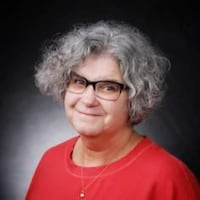The defense says Richardson, then an 18-year-old Carlisle senior, had a stillborn baby in her bathroom, carried her to the backyard and used a garden shovel from the garage to dig a hole and bury her.
Prosecutors say Richardson knew she was pregnant and did nothing to plan for the birth, then killed the baby and hid all evidence of her by burying the body in the dirt.
Brown said she received the bones from the first excavation of the Richardsons’ backyard on July 15 and more on July 20. She examined the remains as well as other evidence that included the interrogation of Richardson and determined baby died from “homicidal violence.”
She said the exact cause of death cannot be determined because of the condition of the remains, and she added that she could not determine if the baby was alive at birth from what was available to examine in the remains.
“Nothing that I can say, just by looking at the bones, that there was a live birth,” Brown testified. “It is important to look at everything … not just at the autopsy table.”
TRIAL COVERAGE
• Recap of Day 1 | Recap of Day 2| Recap of Day 3
• WATCH all videos from Brooke Skylar Richardson trial | Highlights, testimony, interrogations
• Stillborn or alive? That's the key issue in the Carlisle buried baby trial
• More than 2 years of twists and turns lead to Carlisle buried baby trial this week
• Who is Brooke Skylar Richardson?
Brown was questioned extensively about evidence that the baby’s bones were charred. The defense says forensic anthropologist Dr. Beth Murray made a mistake when she first said the bones were charred, and she recanted that testimony. Police, however, used that information to push for a confession that led to her arrest, the defense has said.
During cross examination by Charles H. Rittgers, Brown said again she could not determine if the child was stillborn based on the bones and she could not determine if fractures to the skull occurred before or after death.
Brown testified that Murray was hired by the coroner’s office to analyze the remains and initially said the bones appeared dark and may have had thermal injury. Rittgers said later after the bones dried, Murray changed her mind.
The defense pointed out Brown’s opinion about the baby’s death was based partially on the belief the bones were charred, which was not true.
Rittgers played a small part of a second police interrogation tape with Richardson. She is holding hands with a detective.
“Tell me about the fire,” the detective says.
“What fire?” Richardson says.
In the same interview, Richardson says, “I tried to cremate my baby,” according to a transcript of the interview read by assistant prosecutor Julie Kraft in court.
Rittgers pointed out to Brown that a detective wrote in her report that Richardson said she put a lighter to the baby’s foot and put out the fire when it reached waist high.
When Brown agreed a baby is 75 to 80 percent water, Rittgers asked Brown if it is possible to light a baby’s foot on fire. Brown responded, “I never tried it, I don’t know.”
Rittgers showed the jury photos of the burial site and noted there were no burn marks or any signs of burning. Brown admitted she had never seen pictures of the burial site.
Dr. Krista Latham, a forensic anthropologist from the University of Indianapolis, also testified about the baby’s remains. There would be no trauma to the bones if the child were drowned or suffocated, she said.
Latham agreed with Murray’s second opinion about the bones, that they were not charred.
“I didn’t see any evidence of burning to the skeleton,” Latham said.
She added it is possible for the tissue of the body to be burned without reaching the bone. She estimated there was only 3 to 5 percent of tissue attached to the bones, so testing was not possible.
Latham said the baby’s bones available to be measured were were consistent with 38 to 40 weeks of age. The defense says a local doctor told Richardson that she was 32 weeks pregnant.
About the Author

